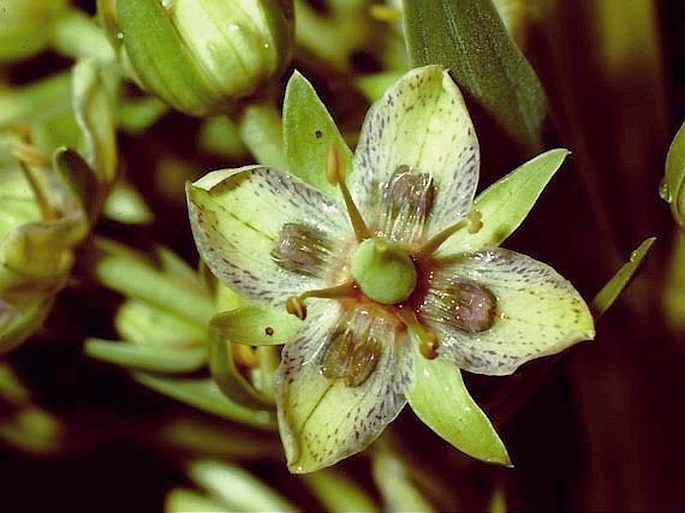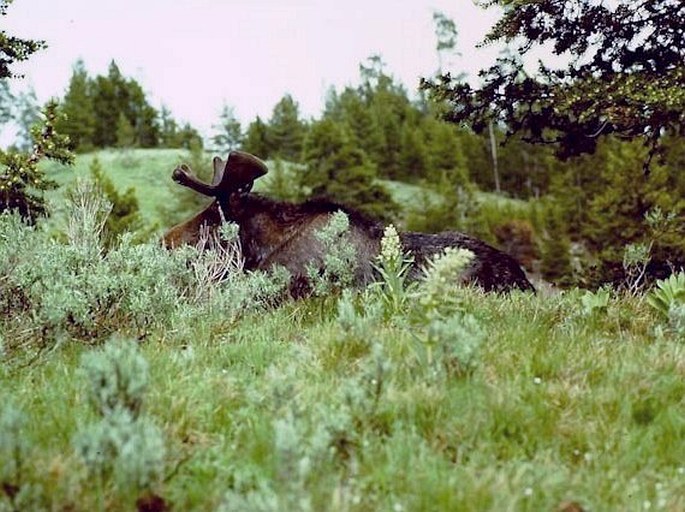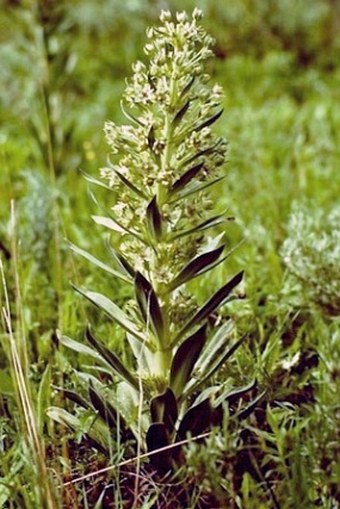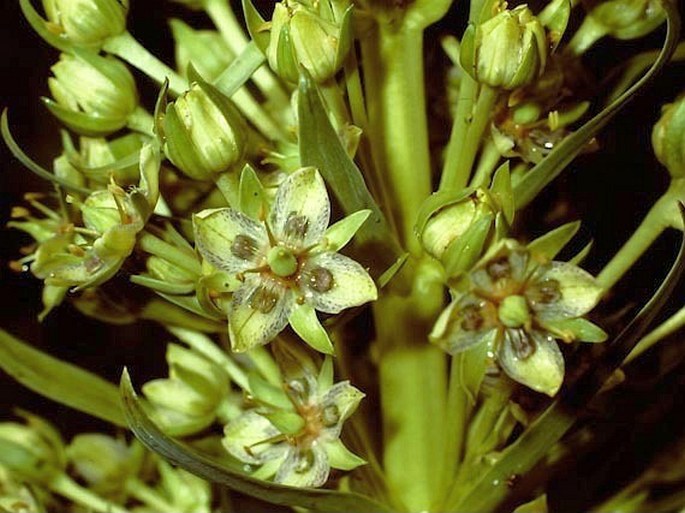Syn.: Frasera angustifolia (Rydb.) Rydb., Frasera macrophylla Greene, Frasera stenosepala (Rydb.) Rydb., Swertia radiata (Kellogg) Kuntze, Tesseranthium angustifolium (Rydb.) Rydb., Tessaranthium radiatum Kellogg, Tessaranthium speciosum (Douglas ex Griseb.) Rydb.
Family: Gentianaceae Juss.

Distribution: Species of west of USA and north of Mexico. Found from the west of South Dakota (Black Hills) to north and east of California.
Ecology: Grows in mountain meadows and light forests, from foothills to subalpine. Blooms from June to August. Plants seem to bloom en masse as if synchronized and it happens roughly once in 2 to 4 years.


Description: Monocarpic herb with woody base, when in flower (50–)100–200(–250) cm tall. Basal leaves (1st year) and in whorls of 3–5 (2nd year), oblong to lance-shaped, widest about middle, 25–50 cm long, 3–15 cm wide, smaller upwards on stem. Flower stem rises from the basal rosette sometimes even after 20 and in some case 60 years and after flowering the whole plant withers and dies. Inflorescence is very long, flowers in an erect panicle, flower clusters from upper leaf axils; Calyx is divided into 4 sepals, 15–17 mm long; corolla tetramerous as well, petals 15–20 mm long, 5–8 mm wide, open saucer-like, yellow green with purple or blue spots. Fruit is is a slightly flattened capsule, 2–2.5 cm long.
Usage: The Navajo considered this a “male” plant and Great Mullein (Verbascum thapsus) a “female” plant. Leaves of both plants were mixed and the tea made out of them was rubbed on the bodies of the hunters to give them strength. Dry leaves were smoked with mountain tobacco to ‘clear the mind’.
Elaborate nectar glands provide quantities of nectar and attract many insects.
Note: Generic name is in memory of Scottish botanist John Fraser (1750–1811), who was quite instrumental in early botany of North America (collected also in Russia and Caribbean).

These images were taken in USA, Wyoming, Yellowstone National Park (July 1983).


